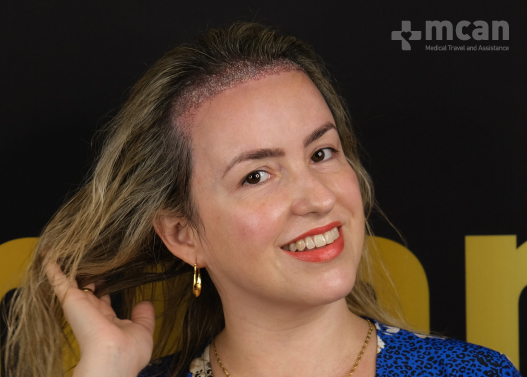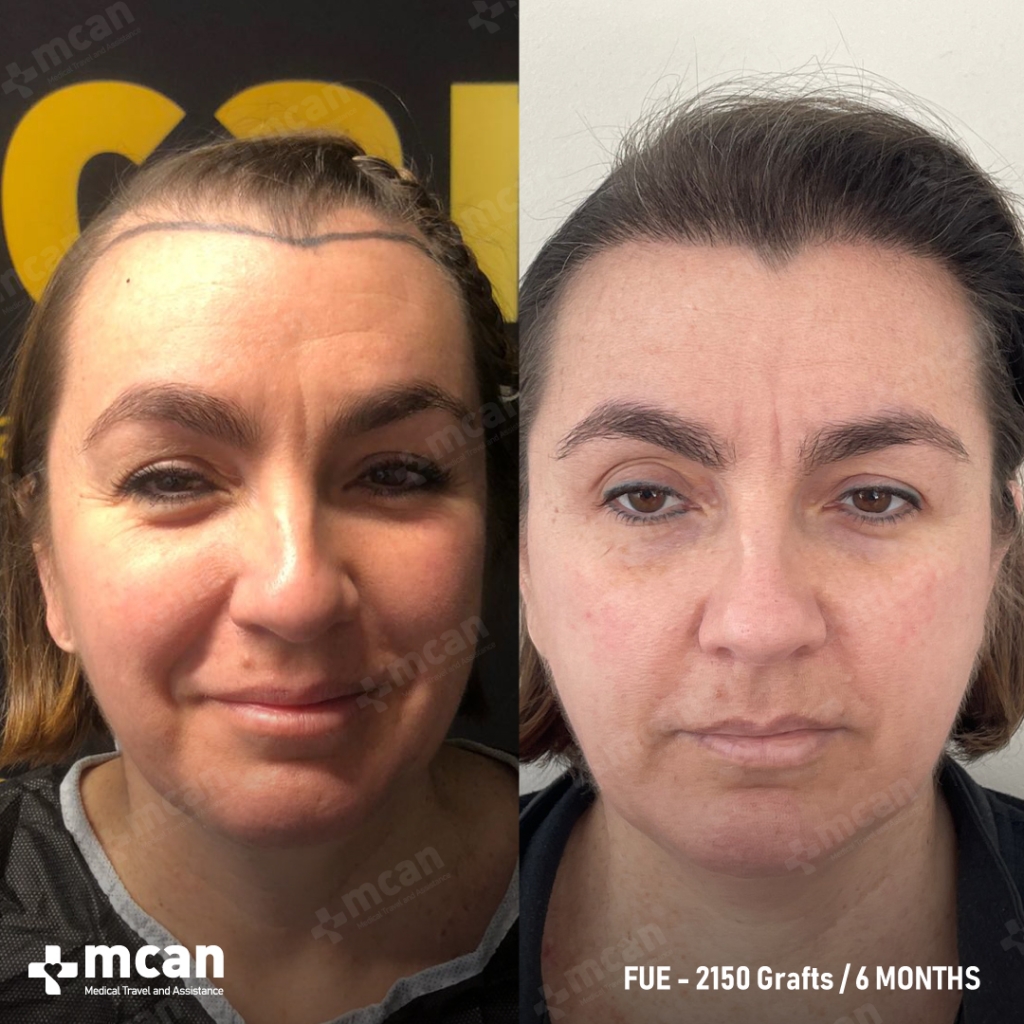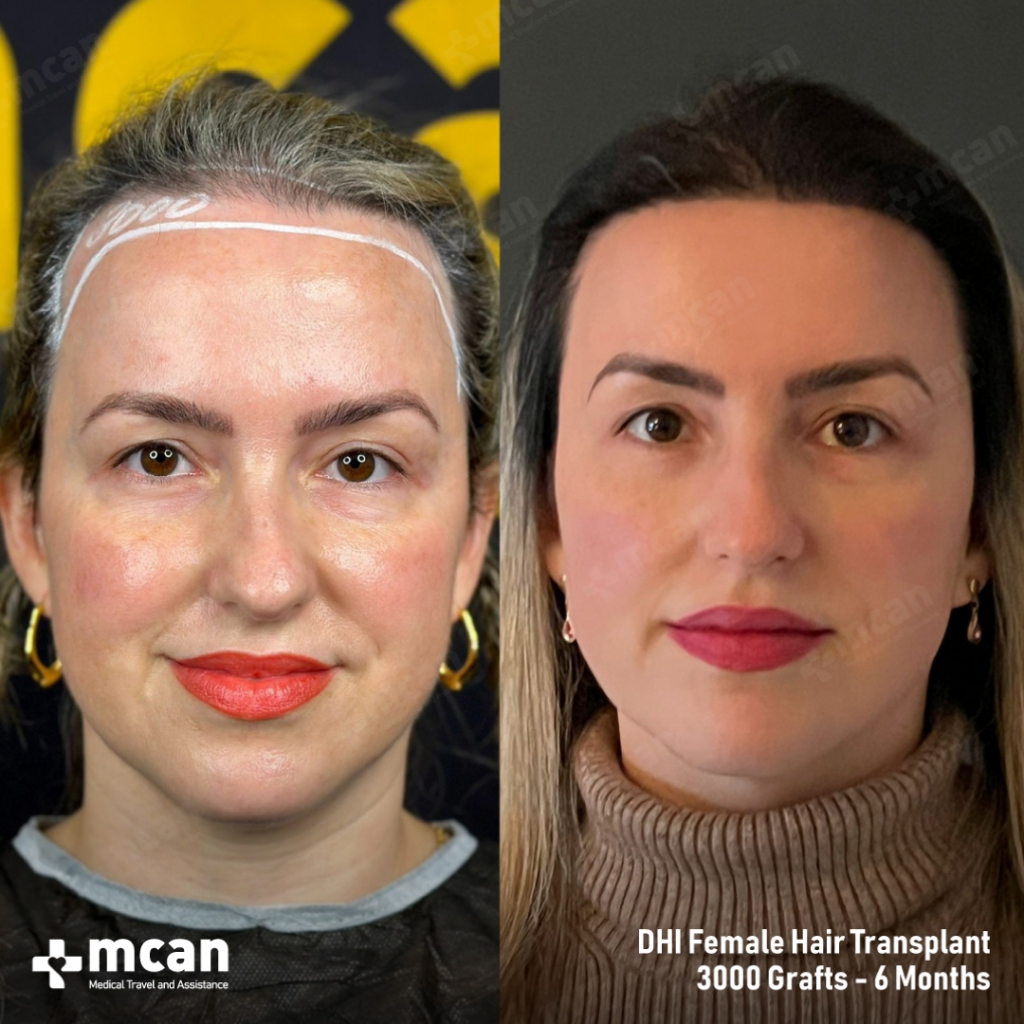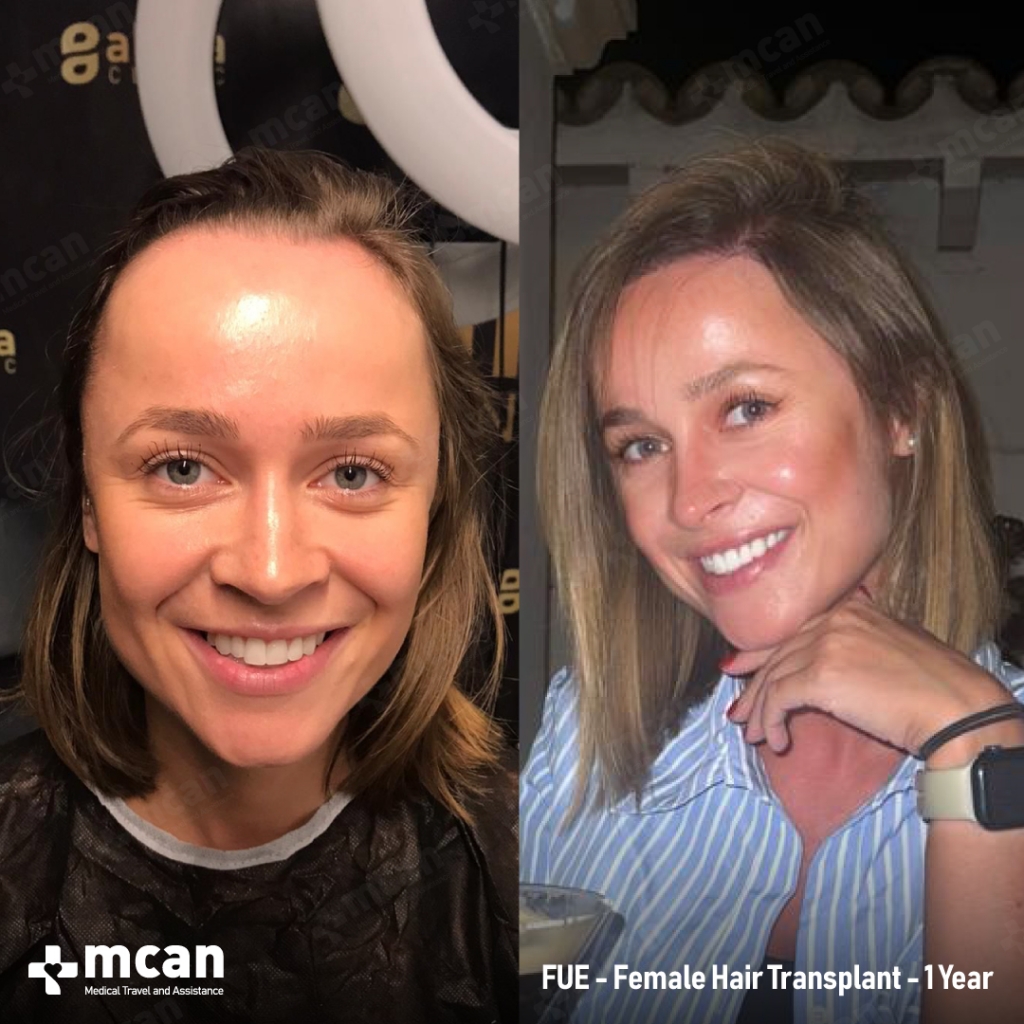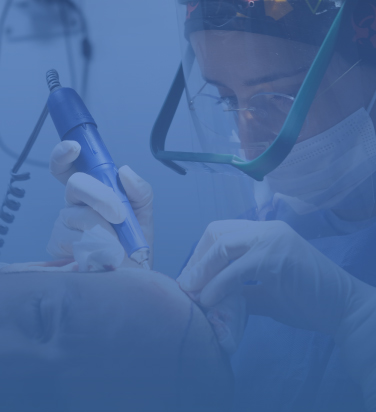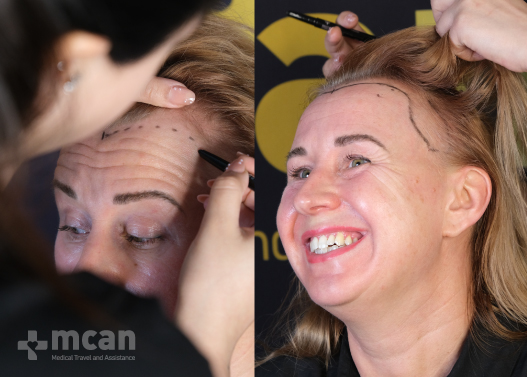Local Anesthesia
The procedure begins with the application of local anesthesia to both the donor and recipient areas, ensuring a pain-free experience throughout the transplant.
Donor Hair Extraction
Healthy hair follicles are extracted from the donor area, usually the back or sides of the scalp, where hair remains thick and resistant to shedding. In FUE, follicles are carefully removed one by one using a micro-punch tool, while in DHI, extraction and implantation occur in a continuous process.
Recipient Site Preparation and Hairline Design
For patients seeking hairline restoration, the surgeon carefully designs the new hairline, considering facial proportions and natural hair growth patterns. In FUE, tiny incisions are made in the recipient area, while DHI allows for direct implantation without pre-made incisions.
Graft Implantation
Each extracted follicle is strategically placed in thinning areas to match the natural angle, depth, and direction of hair growth. This ensures even coverage and a soft, natural transition between transplanted and existing hair.
Post-Procedure Care
Once the transplant is complete, the treated areas are cleaned, and patients receive initial aftercare instructions on scalp care, washing techniques, and activity restrictions to protect the grafts.
Aftercare and Recovery Support
Patients receive a customized recovery plan, including medications, specialized shampoos, and follow-up guidance to support healing and hair regrowth. Over the following months, hair gradually thickens and blends with existing strands, leading to fuller, permanent results.
